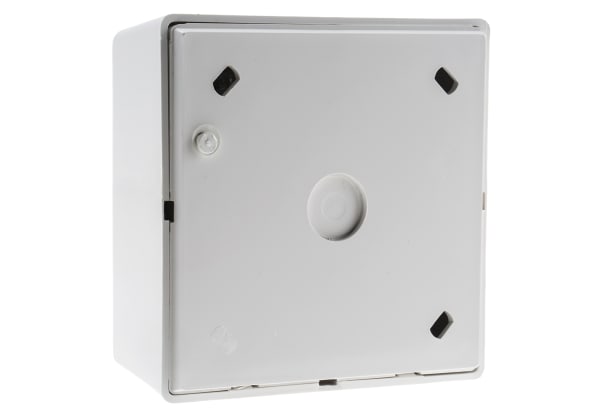- Published 27 Aug 2024
- Last Modified 27 Aug 2024
- 6 min
A Guide to Walkie Talkies
Despite advances in communications technology, walkie talkies remain a popular choice in many different settings where mission critical and instantaneous voice communication is required. Read our guide to learn how walkie talkies developed and where they are used today.
Reviewed by Peter Kendall, Technical Interaction Engineer (August, 2024)
Popular with everyone from children out camping to the military, walkie talkies are commonly found in all sorts of environments, from construction sites to pubs and clubs and the emergency services. But how were walkie talkies developed, what are the rules and regulations covering their use, and what different types are there on the market? This guide explains this along with how to use walkie talkies.
What Are Walkie Talkies?
The walkie talkie is a portable 2-way radio transceiver. Walkie talkies feature a microphone, speaker, and antenna and enable voice communication between users at the push of a button. Walkie talkies communicate with each other over a common radio frequency band (channel).
Unlike the traditional fixed line telephone, ‘walkies talkies’ enabled users to walk and talk at the same time, hence the name. These handheld transceivers are known as ‘two-way’ because they can both send and receive information.
When Were Walkie Talkies Invented?
So when were walkie talkies invented? Portable radio signalling systems carried around in backpacks (the original ‘walkie talkie’) were developed before the outbreak of the Second World War. The first handheld design was manufactured by Motorola in 1941. Canadian inventor Donald Hings and mobile wireless communications leader Albert Gross are credited as the originators of the technology. Early walkie talkies featured vacuum tubes. Following the war, companies such as Raytheon and Magnavox developed new walkie talkie designs for the US military.
Today, walkie talkies are common not just in military settings but also in business, construction, public safety, and recreational use. They are known as ‘half-duplex’ devices because they are two-directional, but only one user can send a signal at a time.
How do Walkie Talkies Work?
Walkie talkies work by converting voice sound waves into radio waves. The walkie talkie’s microphone picks up the user’s voice, and the unit converts it into radio waves and broadcasts the information via the antenna over the walkie talkie channel. The receiving handset (or handsets) receives the information and converts the radio waves into sound via its speaker. Walkie talkies are battery-powered and are particularly useful in areas where there is no GPS or mobile phone signal.
If you’re wondering how to talk on walkie talkies, it’s important to remember that only one person can speak at a time on the walkie talkie network. They do this by pressing the push to talk button (PTT button) on their device. When they have finished speaking, they say ‘over’ to indicate the message is complete.
You may be asking yourself, ‘What does VOX mean on a walkie talkie?’ You will sometimes see this acronym, which stands for ‘voice operated exchanged,’ on a handset. If a walkie talkie can be operated in VOX mode, it can be used hands-free, without having to push the PTT button.
Walkie Talkie Ranges
How far can walkie talkies reach? The maximum range of a walkie talkie could be as high as 35 miles, but this depends on unimpeded transmission. Range is affected by the weather, obstructions (including buildings in cities, and trees and mountains in the countryside), the power of the handset, the channel (radio frequency) it is using, and the type and size of antenna it employs.
When selecting the best walkie talkie for your application, it’s important to remember that the question ‘what range do walkie talkies have?’ is highly variable. The maximum range claimed by the manufacturer is often not achievable in real-world settings.
Walkie Talkie Rules and Regulations
When it comes to walkie talkie laws, countries across the world tend to have government bodies that determine who can use which radio frequencies, and where. In the UK, walkie talkie licence requirements are under the jurisdiction of Ofcom. In Britain, walkie talkies for leisure and personal use do not require a licence, providing they are small, low-powered, and use a specific set of eight UHF band frequencies. This handheld transceiver standard is known as ‘PMR446.’ PMR466 radios are only allowed a power output of 0.5 watts, which makes them much less powerful than the four- or five-watt walkie talkies used professionally.
Use of the more powerful walkie talkies requires a UK walkie talkie licence. Licences vary in cost and in the areas they can be used. Some licences cover use of high-power walkie talkies throughout the country, while others are confined to a specific area, such as a city. Licences may provide a frequency for use just by your organisation in a given place, or use a range of predetermined frequencies across the UK.
Types of Walkie Talkie
Walkie talkies and other 2-way radios have retained their usefulness despite the ubiquity of mobile phones because they allow instantaneous communication and are reliable and flexible. They are used not only as portable radios, but in vehicles and at desktops, too.
Portable Radios
Portable radios are what we tend to think of when we think of walkie talkies. People who use walkie talkies professionally will typically refer to them simply as ‘radios.’ Portable radios may be analogue or digital and carried on the belts of employees in professional settings. They are used everywhere from manufacturing companies to resorts and schools.
Mobile Radios
Mobile two-way radios are found in cars and other vehicles. They connect to an external antenna. Fire services and the police often use these types of radio, which can be mounted on the dashboard. They are typically more powerful than standard walkie talkies, meaning they can function across wider distances.
Desktop Base Station Radios
Desktop base station radios are larger, heavier 2-way radios for installation on desktops. They plug into the wall instead of relying on a battery. Desktop base station radios are ideal for people who need to sit down and use the radio all day, such as in secondary schools, colleges, or universities.
The Future of Two-Way Radio
Despite having been around for a very long time, analogue radio is still a popular choice for certain applications. Walkie talkies have proved to be a durable, long-lasting solution for voice communications despite the huge advances in telephony technology over the past few decades. In part, that is due to their ability to enable instantaneous communication in life or death and emergency situations. In addition, 2-way radios are a great choice in areas where the mobile phone network is patchy or otherwise unreliable or unavailable.
Far from dying away, the walkie talkie global market is forecast to grow from just under $10 billion to more than $13.5 billion by 2029. Digital 2-way radios are becoming more widespread and feature improved coverage and better voice quality. Technological advances in 2-way radios are also expected to include improved battery performance and the integration of artificial intelligence, text messaging, and GPS functionality with walkie talkie handsets. There is also a move to POC (push to talk over cellular) functionality, which integrates phones and walkie talkies, combining walkie talkie-type functionality with smartphone technology.
The portable two-way radio has certainly ventured a long way since it first lumbered around in troops’ rucksacks on the battlefield in the Second World War.
Need walkie talkies, mobile phones, or walkie talkie accessories? Browse RS’ range now.
Related Articles
Related links
- Walkie Talkies
- Walkie Talkie Accessories
- Surveillance Two Wire Earpiece for TLKR Series Walkie Talkies
- D Shaped Earpiece for Motorola TLKR Walkie Talkies
- Motorola Walkie Talkies
- Motorola XT460 16 Channel Two-Way Radio
- Everything You Need To Know About Gas Springs and Gas Struts
- The Complete Guide to Digital Thermometers



